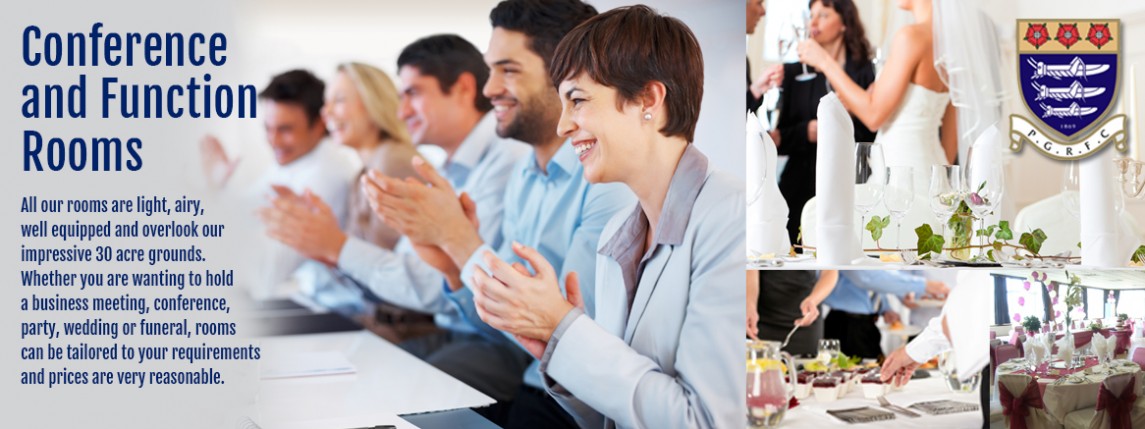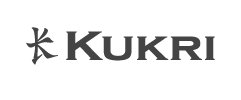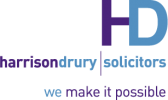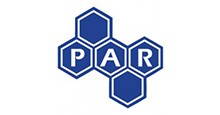Covid-19 Secure
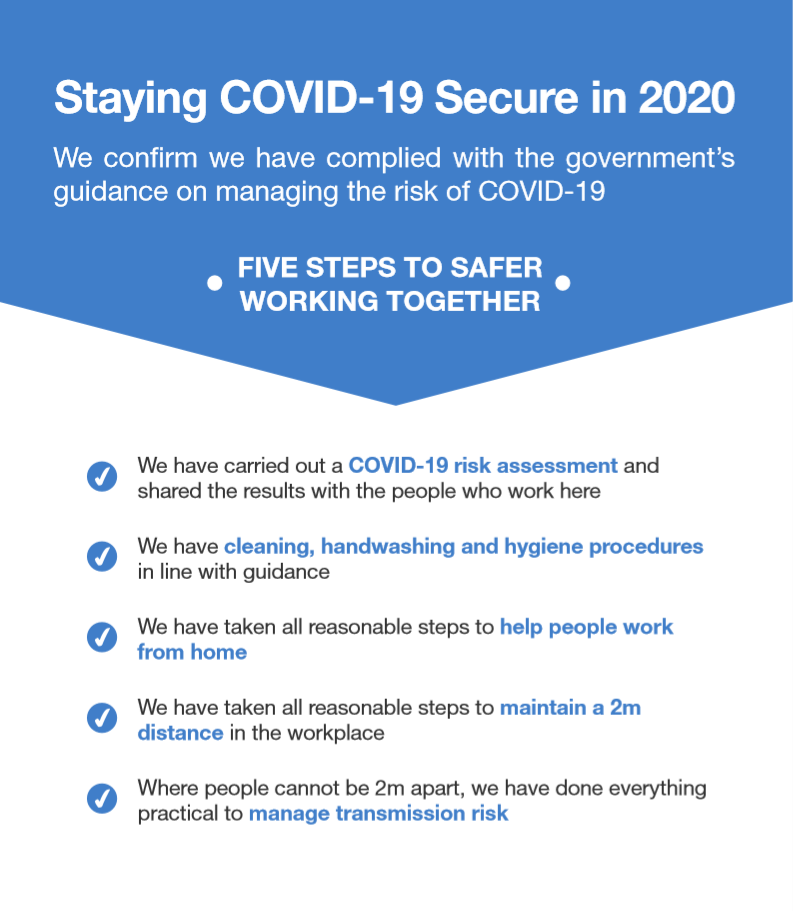
Preston Grasshoppers RFC – Covid 19 Risk Assessment
Methodology
- Identify Hazard.
Transfer of Covid 19 from infected person to non-infected person.
- Employee to employee
- Customer to Employee
- Employee to Customer
- Customer to Customer
- Higher Risk for Vulnerable Workers
- Assess the Risks
- Who might be harmed and how?
- What you’re already doing to control the risks?
- Who needs to carry out the action?
- When the action is needed?
- Control the Risks
- Can I get rid of the Risk altogether?
- If not. How can I control the risks so that harm is unlikely?
- Re-design the job
- Replacing/changing processes
- Organise work to reduce exposure
- Identify Practical measures needed to work safely
- Providing PPE and making sure it is used. PPE is last line of defence.
- Put the controls in place. You’re not expected to eliminate all risks but you need to do everything ‘reasonably practical’ to protect people from harm. This means balancing the level of risk against the measures need to control the real risk in terms of money time and trouble.
- Record Your Findings
Work Through These Steps in Order
- In every workplace, increasing the frequency of handwashing and surface cleaning.
- Businesses and workplaces should make every reasonable effort to enable working from home as a first option. Where working from home is not possible, workplaces should make every reasonable effort to comply with the social distancing guidelines set out by the government (keeping people 2m apart wherever possible).
- Where the social distancing guidelines cannot be followed in full, in relation to a particular activity, businesses should consider whether that activity needs to continue for the business to operate, and, if so, take all the mitigating actions possible to reduce the risk of transmission between their staff.
- Further mitigating actions include:
– increasing the frequency of hand washing and surface cleaning
– keeping the activity time involved as short as possible
– using screens or barriers to separate people from each other
– using back-to-back or side-to-side working (rather than face-to-face) whenever possible
– reducing the number of people each person has contact with by using ‘fixed teams or partnering’ (so each person works with only a few others) - Finally, if people must work face-to-face for a sustained period with more than a small group of fixed partners, then you will need to assess whether the activity can safely go ahead. No one is obliged to work in an unsafe work environment.
In your assessment you should have particular regard to whether the people doing the work are especially vulnerable to COVID-19.
Risk assessment template
Company name: Preston Grasshoppers RFC Assessment carried out by: RGE
Date assessment was carried out: 29 May 2020 Reviewed 24 July 2020 Date of next review: 6 July 2020
|
What are the Hazards |
Who Might be Harmed |
Controls Required |
Additional Controls |
Action by Who? |
Action by When? |
Done |
|
Spread of Covid19 – Coronavirus |
PGRFC Staff Visitors Cleaners Cleaning Contractors Delivery Drivers Customers Vulnerable Groups ( elderly, pregnant workers, those with existing underlying conditions) |
Hand Washing · Hand washing facilities with soap and water in place. · Stringent hand washing taking place https://www.nhs.uk/live-well/healthy-body/best-way-to-wash-your-hands/ · Drying of hands with disposable paper towels Disable hand dryers that may blow the virus around. https://www.nursingtimes.net/news/research-and-innovation/paper-towels-much-more-effective-at-removing-viruses-than-hand-dryers-17-04-2020/ · Staff encouraged to protect skin by applying emollients regularly https://www.nhs.uk/conditions/emollients/ · Gel Hand Sanitisers in areas where washing facilities not available.
|
Employees to be reminded on a regular basis to wash their hands for 20 seconds with water and soap and the importance of proper drying with disposable towels. Also reminded to catch coughs and sneezes in tissues – Follow Catch it, Bin it, Kill it and to avoid touching face, eyes, nose or mouth with unclean hands. Tissues will be made available throughout the workplace. Encourage staff to report any problems and carry out skin checks as part of a skin surveillance programme https://www.hse.gov.uk/food/dermatitis.htm Ensure the Dermatitis poster at hand wash basins and throughout your premises https://www.hse.gov.uk/skin/posters/skinderm atitis.pdf To help reduce the spread of coronavirus (COVID-19) reminding everyone of the public health advice – https://coronavirusresources.phe.gov.uk/hand- hygiene/resources/ Location of hand washing facilities and Gel hand sanitising stations shown on plan A. |
|
|
|
|
|
|
Cleaning · Frequently cleaning and disinfecting objects and surfaces that are touched regularly particularly in areas of high use such as door handles, light switches, reception area using appropriate cleaning products and methods.
|
Rigorous checks will be carried out by line managers to ensure that the necessary procedures are being followed. Extra cleaners or extended hours maybe needed to help with the extra routine cleaning of surfaces
|
|
|
|
|
|
|
Social Distancing · Social Distancing -Reducing the number of persons in any work area to comply with the 2-metre (6.5 foot) gap recommended by the Public Health Agency https://www.publichealth.hscni.net/n ews/covid-19-coronavirus https://www.gov.uk/government/pub lications/covid-19-guidance-on-social- distancing-and-for-vulnerable-people · At work persons can pass within 1 metre of each other, where it is not practicable to keep 2 meters apart. · Taking steps to review work schedules including start & finish times/shift patterns, working from home etc. to reduce number of workers on site at any one time. Also relocating workers to other tasks. · Redesigning processes to ensure social distancing in place. · Conference calls to be used instead of face to face meetings. · Ensuring sufficient rest breaks for staff. · Ensure that where possible staff work from home. Perhaps staff could collect supplies or work and work from home for a few days then return to the office later in the week to replenish supplies etc.
|
Staff to be reminded on a daily basis of the importance of social distancing both in the workplace and outside of it.
Put in place one-way systems in warehouses or office spaces. Cancel non-essential meetings. Identify worker who can remain at home. Do you need to install special software on computers to help them?
|
|
|
|
|
|
|
Symptoms of Covid-19 If anyone becomes unwell with a new continuous cough or a high temperature in the workplace they will be sent home and advised to follow the stay at home guidance. Line managers will maintain regular contact with staff members during this time. If advised that a member of staff has developed Covid-19 their work station and places they may have spent time should be thoroughly cleaned. It is not necessary to clean corridors down which they may have walked.
|
Internal communication channels and cascading of messages through line managers will be carried out regularly to reassure and support employees in a fast changing situation. Line managers will offer support to staff who are affected by Coronavirus or has a family member affected. Ensure procedure for cleaning the workstations are in place.
|
|
|
|
|
|
|
Mental Health Management will promote mental health & wellbeing awareness to staff during the Coronavirus outbreak and will offer whatever support they can to help Reference – https://www.mind.org.uk/information -support/coronavirus-and-your- wellbeing/
|
Regular communication of mental health information and open door policy for those who need additional support.
|
|
|
|
|
|
|
Drinking Water Drinking water fountains or water butts can spread the virus as persons touch the spouts or leavers with contaminated cups/glasses. Ensure such items are disabled.
|
Ensure there is an adequate supply of wholesome drinking water through taps or single use bottles of water. Staff should not share drinking cups/glasses/bottles. Offer drinking water free of charge to customers. |
|
|
|
|
|
|
Maintenance of Equipment It is important to ensure that the equipment that you use in your business in maintained safely. If the equipment becomes unsafe you must not use it.
|
|
|
|
|
|
|
|
Dealing with the public The public should be encourage to make an appointment, to avoid queues and gatherings. Floor marking should be placed in the reception areas or near tills to keep persons 2 meters apart. Perspex screens should be erected at reception areas or tills to protect employees. Contactless payment methods should be strongly encouraged. Avoid handling cash wherever possible.
|
Send out e-mails to customers and update social media with your policy for visiting your premises. Use visible tape and clear signage to guide visitors.
|
|
|
|
Detailed Method Statements to be read alongside above Risk Assessment
- Coming to and Leaving Work
Objective: to maintain social distancing of staff and prevent contamination from work to home and back.
- Stagger Arrival and Departure time so Changing Rooms not crowded. Rotas to be worked out so that the Duty Manager/Supervisor arrives first. Staff are given 5-minute slots to arrive.
- A Hand sanitiser is positioned inside the front door
- Staff Enter via front door then access the squash corridor with a swipe card. All staff sign in. Provide signing in book at office door.
- Staff use the squash changing rooms to change into work clothes. Staff should not travel to and from work in work clothes. Work clothes to be flat back shoes, black slacks or trousers, white shirt or blouse. Storage for clothes and bags to be provided, will be provided in lockers in the squash corridor. Mobile phones to be left in lockers unless with the express permission of the Duty Supervisor.
- Staff report immediately to duty supervisor to be given duties.
- Mobile phones must not be used during shifts, they are a potential source of infection.
- End of shift – Duty Supervisor to inform and confirm the end of a shift. Staff return to Changing rooms. Change out of work clothes and take work clothes home to be washed in a hot wash as soon as possible. Showers are also available.
- Staff sign out at leave premises
- Common Areas and Breaks
Objective: To maintain social distancing while using common areas.
- Staff breaks to be allocated by Duty Supervisor. Only one staff member at a time to be on a break. Staff must not go for breaks including smoking breaks without permission, Smoking break times are not additional to breaks of none-smokers. Smokers must take extra additional care with hand washing. Simons Lounge to be allocated as staff rest area.
- Moving Around Buildings and Worksites
Objective: to maintain social distancing
- Movement is to be reduced by discouraging non-essential trips within buildings and sites, for example, restricting access to some areas,
- Reduce job and location rotation, for example, assign worker to specific till. Servers, clearers, chefs to certain areas of kitchen. See workstation diagram.
- As far as possible one-way flow routes through buildings will be set up through signage that clearly indicate the direction of flow. See one-way flow diagram.
- Use of high traffic areas including corridors and staircases to be regulated with warning signs to maintain social distancing
- Workplaces and Workstations
Objective: to maintain social distancing
- For people who work in one place workstations should allow them to maintain social distancing from one another aas well as the public.
- Workstations should be assigned to an individual as much as possible. If need to be shared should be shared by as few people as possible.
- Layouts and processes have been reviewed to allow staff to work further apart from each other.
- Only where it is not possible to move workstations further apart, arranging people to work side-by-side or facing away from each other rather than face-to-face for instance in the kitchen Food Preparation area.
- Screens may be necessary to separate people from each other. For example, at service points
- Floor tape will be used to mark areas to help workers keep to a 2m distance.
- Using screens to create a physical barrier between people where appropriate, for example, considering areas such as till points.
- Food preparation
Objective: To maintain social distancing and reduce contact where possible in kitchens and other food preparation areas.
COVID-19 is a respiratory illness. It is not known to be transmitted by exposure to food or food packaging.
Following government guidance on managing food preparation and food service areas. This is already in place and needs to be enhanced as follows. Steps that will usually be needed:
- Allowing kitchen access to as few people as possible.
- Minimising interaction between kitchen staff and other workers, including when on breaks.
- Putting teams into shifts to restrict the number of workers interacting with each other.
- Spacing workstations 2m apart as much as possible, recognising the difficulty of moving equipment such as sinks, hobs and ovens. Consider cleanable panels to separate workstations in larger kitchens.
- Providing floor marking to signal distances of 2m apart.
- Using ‘one way’ traffic flows to minimise contact.
- Minimise access to the pantry, fridges and freezers, for example, with only one person being able to access these areas at one point in time.
- Minimising contact at ‘handover’ points with other staff, such as when presenting food to serving staff.
6 Accidents, security and other incidents
Objective: To prioritise safety during incidents.
In an emergency (for example, an accident, fire, or break in), people do not have to stay 2m apart if it would be unsafe.
People involved in the provision of assistance to others should pay particular attention to sanitation measures immediately afterwards, including washing hands.
7 Selling food or drink
Objective: To minimise interactions with workers and the public when selling food or drinks.
:
- Minimising contact between kitchen workers and front of house workers by having a tables or counter areas where completed orders are placed.
- Use front of house staff to direct customers to food collection point.
- Creating a physical spacing barrier such as a screen or lines between front of house workers and customers where possible.
- Using only contactless payments
- Setting out clear demarcation for 2m distances for customers queuing and in seating areas. Provide screens if necessary.
- Customers to order on apps to eliminate contact with server.
- Making regular announcements to remind customers to follow social distancing advice and clean their hands regularly.
Hoppers Customer Process
- Initially tables can only be pre-booked. Customer rings club or goes online to book a table and are allocated a table number.
- Customers are advised that the ordering process will be via the ordering app and that payment will also only be taken through the app. Pre-orders for food and first round of drinks to be encouraged. Customers must arrive within 15 minutes of their booked time as food and drink will be prepared.
- Tables can be booked from 2 to 6 people. Customers reminded to only book the appropriate number or groupings of people to comply with government social distancing guidelines in place at the time. The club reserves the right to decline a booking if it suspects that social distancing guidelines will not be complied with by the customer.
- Three service times will be available in which customers can book. 30pm to 3.30pm 4.0pm to 7.00pm and 7.30 pm to 11pm. The club will close to the public between 3.30pm and 4pm and 7.00pm and 7.30pm for cleaning.
- The club reserves the right to ask a customer or group of customers to leave if they suspect that social distancing guidelines are being broken.
- Customer arrives at back entrance to the club. A queuing system will be in place and Front of House Supervisor checks the customer in and shows them to the table. During walk to table supervisor reminds customer of the procedures in place such as one-way systems, toilet systems and ordering. Supervisor informs bar and kitchen that customer is on site.
- Customer’s food and drink are prepared and put on a tray on the delivery table with the table number.
- Customer receives text saying order is ready and collects from delivery table.
- Customer returns dirty plates and glasses to clearance table.
- Customers leave via back entrance to club.
- Customer toilets
- Female toilets on the front corridor. Limit 2 at a time
- Men’s toilets to be made into staff toilets on front corridor. Limit 2 at a time.
- Men’s toilets to be at rear by changing rooms. Limit 4 at a time. One-way system, exit through changing rooms.
- Numbers to be limited. Customers must stop and ask in a loud voice how many are in each rest room prior to entry. If not clear they must wait in queue social distanced until they can enter.
- Customers requested to close toilet lids before flushing. Provide disinfectant spray, wipes and hand towels and request customers to wipe down toilets and sink areas after use. Provide paper towels and disable hand driers. Provide ample bins. Toilets to be closed and cleaned every half hour by a staff member. (need toilet cleaning procedure)
8 Providing and explaining available guidance
Objective: To make sure people understand what they need to do to maintain safety.
Steps that will usually be needed:
- Displaying clearly to customers the social distancing guidelines in place.
- Where site visits are required, for example, inbound supplier deliveries or safety critical visitors, providing site guidance on social distancing and hygiene on or before arrival.
- Reviewing entry and exit routes for customers, visitors and contractors to minimise contact with other people.
9 Cleaning the Workplace
Before Re-Opening
Objective: To make sure that any site or location that has been closed or partially operated is clean and ready to restart, including:
- an assessment for all sites, or parts of sites, that have been closed, before restarting work
- cleaning procedures and providing hand sanitiser, before restarting work
- Check and if necessary clean the kitchen extraction system.
- Deep Clean Kitchen, Pantry, Cellar, Food Stores and Bars Opening windows and doors frequently to encourage ventilation, where possible.
- Deep Clean public areas.
- Deep Clean all toilets
- Deep clean all furniture and benches.
- Deep clean all windows and doors particularly handles.
Keeping the workplace clean
Objective: To keep the workplace clean and prevent transmission by touching contaminated surfaces.
Steps that will usually be needed:
- Following government guidance on cleaning food preparation and food service areas.
- Wedging doors open, where appropriate, to reduce touchpoints. This does not apply to fire doors.
- Cleaning laminated menus or disposing of paper menus after each use.
- Providing only disposable condiments or cleaning non-disposable condiment containers after each use.
- If you are cleaning after a known or suspected case of coronavirus then you should refer to the specific guidance.
- Frequent cleaning of work areas and equipment between uses, using your usual cleaning products.
Kitchen or cafe cleaning
Objective: To ensure the highest hygiene standards are operated in kitchen areas.
Steps that will usually be needed:
- Following government guidance on cleaning food preparation and food service areas.
- Recognising that cleaning measures are already stringent in kitchen areas, consider the need for additional cleaning and disinfection measures.
- Having bins for collection of used towels and staff overalls.
- Asking workers to wash hands before handling plates and glasses
- Continuing high frequency of hand washing throughout the day.
10 Hygiene – handwashing, sanitation facilities and toilets
Objective: To help everyone keep good hygiene through the working day.
Steps that will usually be needed:
- Following government guidance on hygiene in food preparation and food service areas.
- Using signs and posters to build awareness of good handwashing technique, the need to increase handwashing frequency, avoid touching your face and to cough or sneeze into your arm.
- Providing regular reminders and signage to maintain hygiene standards.
- Providing hand sanitiser in multiple locations in addition to washrooms.
- Setting clear use and cleaning guidance for toilets to ensure they are kept clean and social distancing is achieved as much as possible.
- Enhancing cleaning for busy areas.
- Special care should be taken for cleaning of portable toilets.
- Providing more waste facilities and more frequent rubbish collection.
- Providing hand drying facilities – either paper towels or electrical driers.
11 Changing rooms and showers
Objective: To minimise the risk of transmission in changing rooms and showers.
Steps that will usually be needed:
- Where shower and changing facilities are required, setting clear use and cleaning guidance for showers, lockers and changing rooms to ensure they are kept clean and clear of personal items and that social distancing is achieved as much as possible.
- Introducing enhanced cleaning of all facilities regularly during the day and at the end of the day.
12 Handling goods, merchandise and other materials, and onsite vehicles
Objective: To reduce transmission through contact with objects that come into the workplace and vehicles at the worksite.
Steps that will usually be needed:
- Cleaning procedures for goods and merchandise entering the site.
- Cleaning procedures for the parts of shared equipment you touch after each use.
- Encouraging increased handwashing and introducing more handwashing facilities for workers handling goods and merchandise, or providing hand sanitiser where this is not practical.
- Enhanced handling procedures of laundry to prevent potential contamination of surrounding surfaces, to prevent raising dust or dispersing the virus.
13 Personal protective equipment (PPE) and face coverings
In this section
PPE protects the user against health or safety risks at work. It can include items such as safety helmets, gloves, eye protection, high-visibility clothing, safety footwear and safety harnesses. It also includes respiratory protective equipment, such as face masks.
Where you are already using PPE in your work activity to protect against non-COVID-19 risks, you should continue to do so.
At the start of this document we described the steps you need to take to manage COVID-19 risk in the workplace. This includes working from home and staying 2m away from each other in the workplace if at all possible. When managing the risk of COVID-19, additional PPE beyond what you usually wear is not beneficial. This is because COVID-19 is a different type of risk to the risks you normally face in a workplace, and needs to be managed through social distancing, hygiene and fixed teams or partnering, not through the use of PPE.
The exception is clinical settings, like a hospital, or a small handful of other roles for which Public Health England advises use of PPE.
Unless you are in a situation where the risk of COVID-19 transmission is very high, your risk assessment should reflect the fact that the role of PPE in providing additional protection is extremely limited. However, if your risk assessment does show that PPE is required, then you must provide this PPE free of charge to workers who need it. Any PPE provided must fit properly.
Face coverings
There are some circumstances when wearing a face covering may be marginally beneficial as a precautionary measure. The evidence suggests that wearing a face covering does not protect you, but it may protect others if you are infected but have not developed symptoms.
A face covering can be very simple and may be worn in enclosed spaces where social distancing isn’t possible. It just needs to cover your mouth and nose. It is not the same as a face mask, such as the surgical masks or respirators used by health and care workers. Similarly, face coverings are not the same as the PPE used to manage risks like dust and spray in an industrial context. Supplies of PPE, including face masks, must continue to be reserved for those who need them to protect against risks in their workplace, such as health and care workers, and those in industrial settings like those exposed to dust hazards.
It is important to know that the evidence of the benefit of using a face covering to protect others is weak and the effect is likely to be small, therefore face coverings are not a replacement for the other ways of managing risk, including minimising time spent in contact, using fixed teams and partnering for close-up work, and increasing hand and surface washing. These other measures remain the best ways of managing risk in the workplace and government would therefore not expect to see employers relying on face coverings as risk management for the purpose of their health and safety assessments.
Wearing a face covering is optional and is not required by law, including in the workplace. If you choose to wear one, it is important to use face coverings properly and wash your hands before putting them on and taking them off. You should be prepared to remove your face covering if asked to do so by police officers and staff for the purposes of identification.
Employers should support their workers in using face coverings safely if they choose to wear one. This means telling workers:
- wash your hands thoroughly with soap and water for 20 seconds or use hand sanitiser before putting a face covering on, and after removing it
- when wearing a face covering, avoid touching your face or face covering, as you could contaminate them with germs from your hands
- change your face covering if it becomes damp or if you’ve touched it
- continue to wash your hands regularly
- change and wash your face covering daily
- if the material is washable, wash in line with manufacturer’s instructions. If it’s not washable, dispose of it carefully in your usual waste
- practise social distancing wherever possible
You can make face-coverings at home. Find guidance on how to wear and make a face-covering on GOV.UK.
14 Communications and training
Returning to work
Objective: To make sure all workers understand coronavirus related safety procedures.
Steps that will usually be needed:
- Providing clear, consistent and regular communication to improve understanding and consistency of ways of working.
- Engaging with workers through existing communication routes and worker representatives to explain and agree any changes in working arrangements.
- Developing communication and training materials for workers prior to returning to site, especially around new procedures for arrival at work.
- Employees in at Risk Categories to be considered for the workstations with the least interactions and most distance from other workers
- Rotas to be developed taking into account at Risk employees and also keep teams together to reduce the risk of contamination between teams.
Ongoing communications and signage
Objective: To make sure all workers and visitors are kept up to date with how safety measures are being implemented or updated.
Steps that will usually be needed:
- Ongoing engagement with workers, including through trade unions or employee representative groups, to monitor and understand any unforeseen impacts of changes to working environments.
- Awareness and focus on the importance of mental health at times of uncertainty. The government has published guidance on the mental health and wellbeing aspects of coronavirus.
- Communicating approaches and operational procedures with suppliers, customers or trade bodies to help their adoption and to share experience.
- Using simple, clear messaging to explain guidelines using images and clear language, with consideration of groups for which English may not be their first language.
- Using visual communications, for example whiteboards or signage, to explain changes to production schedules, breakdowns or materials shortages to reduce the need for face to face communications.












